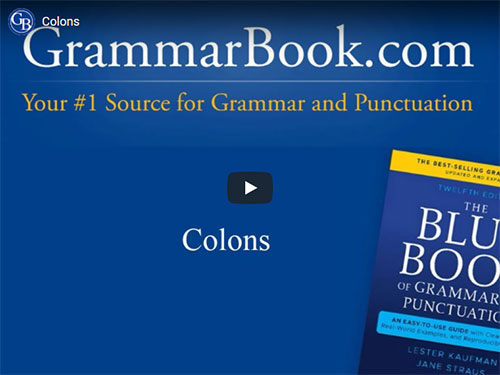|
What Is a Cleft Sentence?
|
|
Clear and expressive writing in English will mainly apply the active voice, in which a lead subject performs an action by means of the verb. In developing style and voice, writers will become proficient in facets such as mood and tone and nimble variation as well.
At times we also may find ourselves wanting or needing to emphasize a sentence element other than the main subject and verb. For example, we use the passive voice when we wish to stress the object:
Active: Quasimodo rang the tower bell. (emphasis subject)
Passive: The tower bell was rung by Quasimodo. (emphasis object) |
Another method for shifting grammatical weight is the cleft sentence, which is a complex sentence that moves a component from its normal position into a different clause to draw greater attention to it.
Cleft Sentences: It
The "it" cleft sentence is perhaps the most common. You'll recognize it by its structure:
introductory word > form of to be > emphasized element > defining relative clause
Standard sentence: Tamil solved the complex equation this morning.
Cleft sentence: It was this morning that Tamil solved the complex equation. |
| introductory word |
It |
| form of to be |
was |
| emphasized element |
this morning |
| defining relative clause |
that Tamil solved the complex equation |
We might use this construction in a context where we know that Tamil solved the complex equation (understood information), but we are not aware of when he did (new information). The cleft sentence links what is understood to what is new while drawing extra attention to the new information.
The same "it" cleft sentence can be written in other ways to cast different emphasis:
Cleft sentence: It was the complex equation that Tamil solved this morning.
Understood: Tamil solved something this morning.
New: It was the complex equation.
Cleft sentence: It was Tamil who solved the complex equation this morning.
Understood: Someone solved the complex equation this morning.
New: It was Tamil. |
Cleft Sentences: Wh-words and How
In addition to the common "it" cleft sentence, you'll recognize others that start with words such as who, what, when, where, and why as well as how.
Standard: We need to find out who put salt instead of sugar in the coffee.
Cleft: Who put salt instead of sugar in the coffee is what we need to find out.
Cleft Understood: We need to find out something.
Cleft New: Someone put salt instead of sugar in the coffee; we don't know who did it.
Standard: No one knows where she goes.
Cleft: Where she goes is what no one knows.
Cleft Understood: There's something no one knows.
Cleft New: Something = where she goes
Standard: They don't understand how to change the tire.
Cleft: How to change the tire is what they don't understand.
Cleft Understood: The tire is broken or flat; they don't understand something.
Cleft New: Something = how to change the tire
Note that these cleft constructions also can be inverted to flip the emphasis:
What we need to find out is who put salt instead of sugar in the coffee.
What no one knows is where she goes.
What they don't understand is how to change the tire. |
Related Topic
Grasping the Grammatical Expletive
|
View and comment on this
article on our website.
|
|
|

|
Pop Quiz
Change each sentence to a cleft sentence using the lead word provided, as well as the point of emphasis if included.
1. Raphael needs new car insurance now. (it, now)
2. Danielle opened a microbrewery last month. (what)
3. Sabrina practices cheer every day because she wants to compete. (why)
4. Marco completed the project request for the client. (it, for the client)
5. Gordon writes music for a jazz quartet. (what)
|
 |
The Blue Book of Grammar and Punctuation
by Lester Kaufman and Jane Straus |
The Authority on English Grammar! Twelfth Edition Now Available
An indispensable tool for busy professionals, teachers, students, homeschool families, editors, writers, and proofreaders.
Available in print AND as an e-Book! Over 2,000 copies are purchased every month!
To order the book, simply click the link to order the book from the GrammarBook.com website.
|
Free BONUS Quiz for You!
[[firstname]], because you are a subscriber to the newsletter, you get access to one of the Subscribers-Only Quizzes. Click here to take a Semicolons and Colons Quiz and get your scores and explanations instantly!
We will be adding many more quizzes this year to our already substantial list of them. If you have suggestions for topics we have not yet covered, please send us a message at help@grammarbook.com.
|
Hundreds of Additional Quizzes
at Your Fingertips
Subscribe now to receive hundreds of additional English usage quizzes not found anywhere else!
Teachers and Employers
Save hours of valuable time! You may assign quizzes to your students and employees and have their scores tallied, organized, and reported to you! Let GrammarBook.com take the hassle out of teaching English!
"Fun to test my skills."
"The explanations really help ... thanks!"
"I can select the quizzes to assign to my students, and then the results are reported to me automatically!"
If you think you have found an error in a quiz, please email us at help@grammarbook.com
|
Wordplay

Pop Quiz Answers
1. It is now that Raphael needs new car insurance.
2. What Danielle opened last month was a microbrewery.
3. Why Sabrina practices cheer every day is because she wants to compete.
4. It was for the client that Marco completed the project request.
5. What Gordon writes is music for a jazz quartet.
|
 |
English In A Snap:
68 One-Minute English Usage Videos FREE |
Learn all about who and whom, affect and effect, subjects and verbs, adjectives and adverbs, commas, semicolons, quotation marks, and much more by just sitting back and enjoying these easy-to-follow lessons. Share them with your colleagues (and boss), children, teachers, and friends as well! Click here to watch.
|
|





